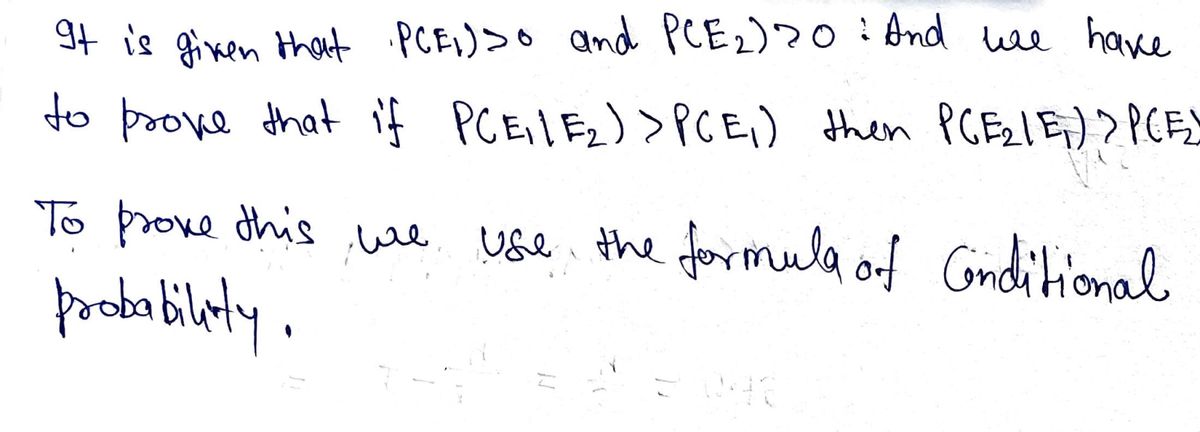Let E, and E, be events with IP(E1) > 0 and P(E2) > 0. Prove that if P(E, E2) > P(E1) then P(E2|E1) > P(E2
Let E, and E, be events with IP(E1) > 0 and P(E2) > 0. Prove that if P(E, E2) > P(E1) then P(E2|E1) > P(E2
A First Course in Probability (10th Edition)
10th Edition
ISBN:9780134753119
Author:Sheldon Ross
Publisher:Sheldon Ross
Chapter1: Combinatorial Analysis
Section: Chapter Questions
Problem 1.1P: a. How many different 7-place license plates are possible if the first 2 places are for letters and...
Related questions
Question

Transcribed Image Text:a Let E, and E, be events with P(E) > 0 and P(E2) > 0. Prove that if P(E|E2) > P(E1) then P(E2|E1) > P(E2
ting the right answers" and carefully explain every step of your arg
ashould take care over presen
k at the exampies exercises we have done in class to see the level of detail required. Your work should be uploaded
well
dent number on each
work
Expert Solution
Step 1

Step by step
Solved in 2 steps with 2 images

Recommended textbooks for you

A First Course in Probability (10th Edition)
Probability
ISBN:
9780134753119
Author:
Sheldon Ross
Publisher:
PEARSON


A First Course in Probability (10th Edition)
Probability
ISBN:
9780134753119
Author:
Sheldon Ross
Publisher:
PEARSON
